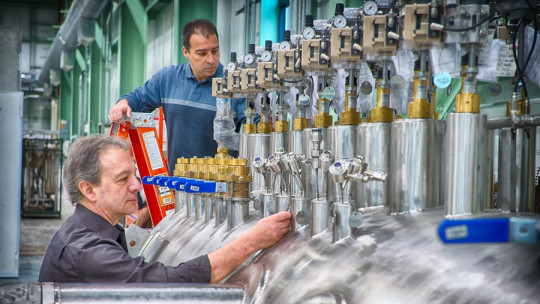Many will think that a product and a service are two easily differentiated terms. For example, it is very clear that when you buy a computer you are purchasing a product, and when you call the IT specialist to fix it you are requesting a service.
However, sometimes the line between the two concepts seems to be unclear. For example, when you go to a restaurant, do you buy a product or request a service?
In this article we will reveal the differences between product and service in addition to giving examples to understand it better.
What is the difference between product and service?
Let’s take a deeper look at how the services and products differ.
1. Tangible vs. intangible
This may be the clearest difference. A product is something that exists physically, that we can touch, taste, smell, see and even hear. On the other hand, a service is made of physical matter, since it is an action.
The difference between a tangible product and an intangible service is at the time of sale. While the product was already there, the service is only perceived after having received it
2. Storable vs. perishable
This is another difference that is also very easy to understand. The products are storable, at least for a period of time. Instead, services simply cannot be saved because they are actions.
For example. A car salesman sells products, which, if not purchased, are parked in the garage. If the weekend comes and the store closes, the product will still be there.
On the other hand, if what is offered is a car rental service, if there is a day in which they are not rented, they are ceasing to offer the service. It is not that the service is saved, it is that it is not there at all.
The storage capacity of a product must be taken into consideration given that aspects such as the expiration date or the surplus can lead to economic losses.
Regarding services, it is important to ensure that your offer is made to a market interested in it, and you must also take into account what are the most appropriate times to offer it. Although it is something that will not expire, it must be taken into account that if it is offered on days when there are no customers, it is being offered something that people simply do not demand.
3. Involvement vs. acquisition
Services are not something physically perceptible, since they emerge at the moment someone wants to receive them. Basically, there is service when there are customers For example, a masseuse does his job when there is a client who requests it. Massages are not something material, since they are received.
Another aspect to keep in mind about services is that they are highly customizable, unlike products.
For example, going to buy a suit, a product, is not the same as going to have it made, a service. In the first case, although there may be several sizes and types of suit, it is a product that is already made from the factory. On the other hand, going to have it done involves having your measurements taken and taking into account exactly how you want it.
4. Need vs. trust
Products are made with a basic function, which is to satisfy the need for which they were made. If you buy a dishwasher and it cleans well, then it is a good product.
This does not happen so clearly with services. When you receive a service, the criteria to consider it good are totally subjective They depend on each person who receives it.
When you decide to go to a restaurant or a hair salon, the trust you have in the professionals who work there will largely determine whether you go to those specific establishments.
This is not to say that people choose products out of extreme necessity rather than trusting their brand, previous experiences with it or recommendations from others, however, the decision to buy a brand of milk or a type of razor is not It is something that takes a long time to decide.
5. Homogeneity vs. heterogeneity
Products are usually the result of a mass production chain The object is designed, the molds are created and several thousand are made a week. All of them practically the same. Products, in mass manufacturing, follow very specific standards. For this reason, if a product is purchased and found to be defective, it can be returned or fixed.
On the other hand, the quality and characteristics of a service will depend on many factors. Several people can offer the same service and yet carry it out in very different ways.
It is ideal for companies to have quality criteria when offering a service, or something so that, if the customer is dissatisfied, they can be compensated in some way.
6. Customer – supplier interaction
When a service is produced, there must be at least two people: the client and the provider. That is why, to guarantee that the client acquires the service that is being offered, The supplier must take great care of the business relationship
In relation to the previous point, it is important that the company guarantees that quality standards are met when offering the service.
Aspects such as the image of the employee and their communication capacity, along with the physical space in which the action is carried out, become very important when what is offered is something intangible such as a service.









